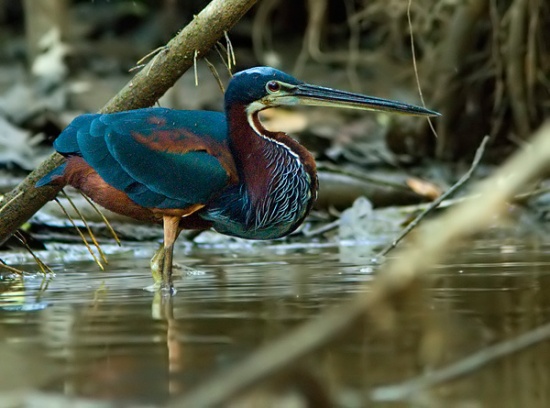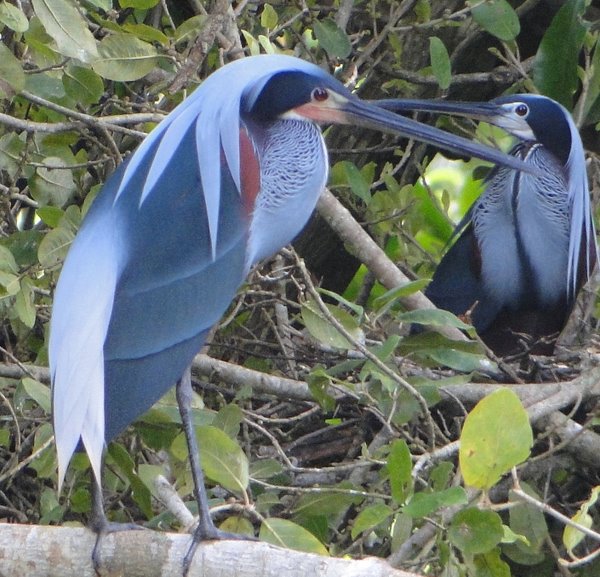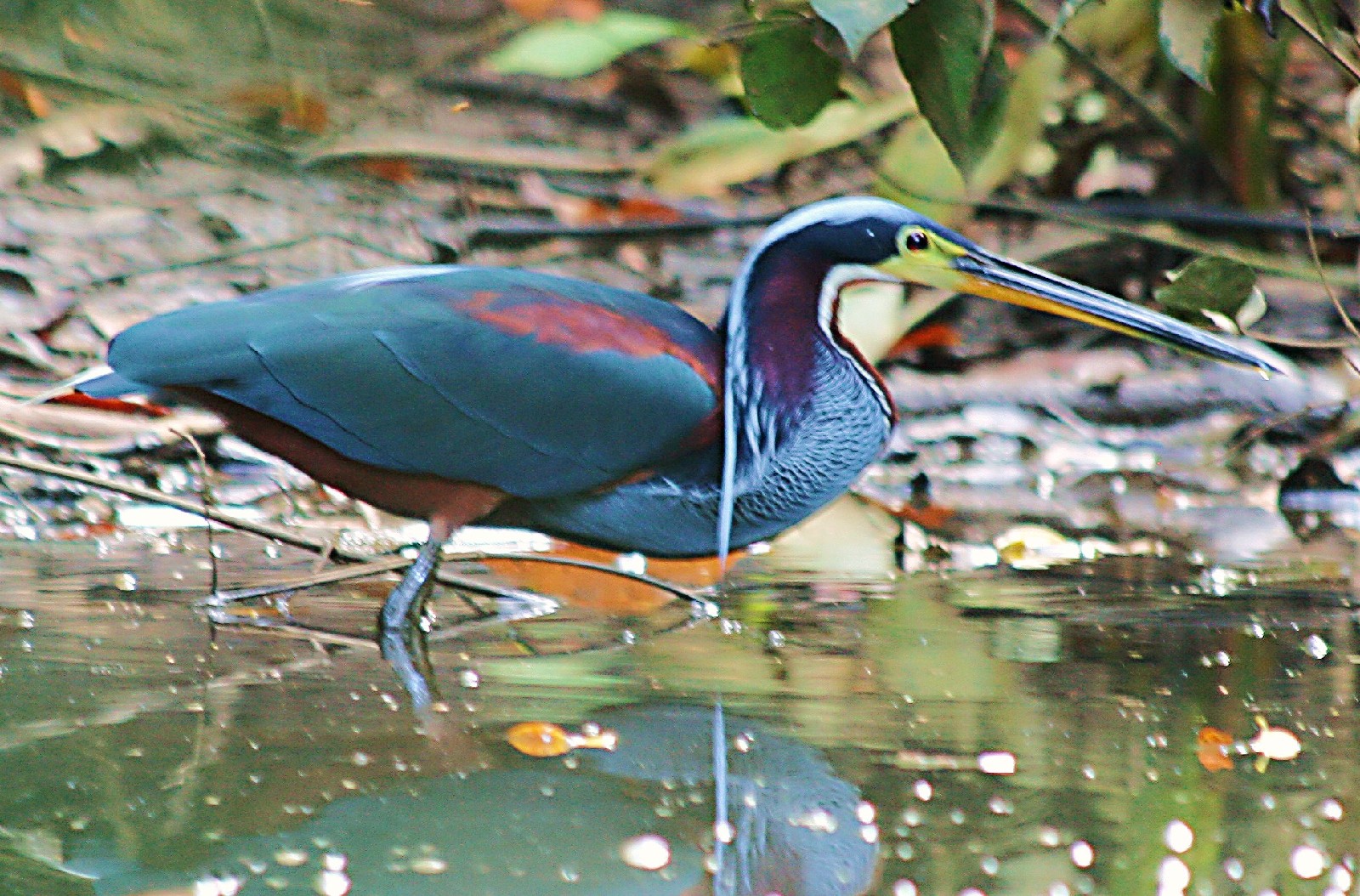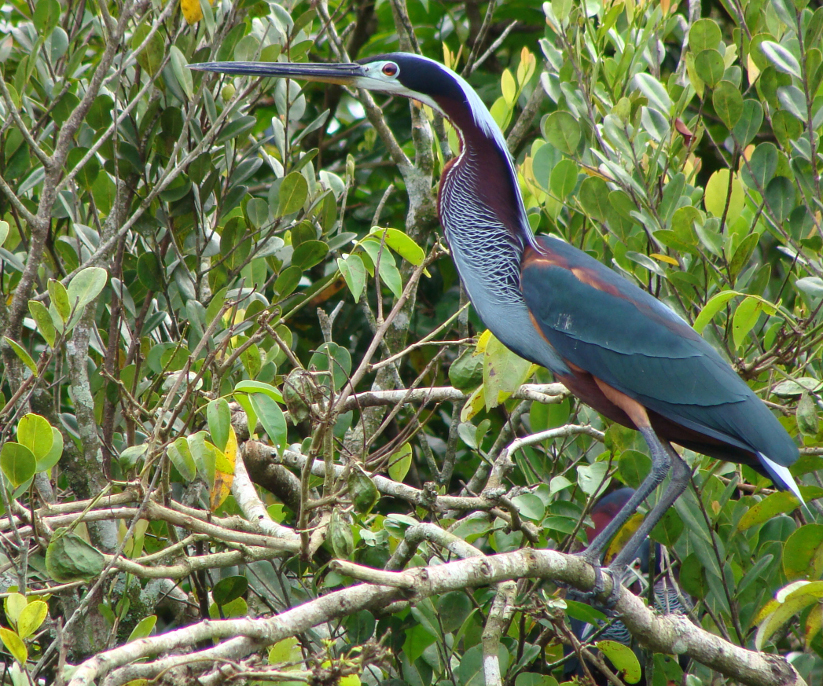
Agamia agami
SUBFAMILY
Agamiinae
TAXONOMY
Ardea agami Gmelin, 1789, Cayenne. Monotypic.
OTHER COMMON NAMES
English: Chestnut-bellied heron; French: Hйron agami; German:
Speerreiher; Spanish: Garza Agamн.
PHYSICAL CHARACTERISTICS
The agami heron is a strikingly colored medium-sized heron.
The rapier-like bill averages 5.5 in (140 mm) but sometimes
reaches 6.4 in (163 mm), about one-fifth the bird’s total length
(24–30 in [60–76 cm]). The neck is very long and snake-like.
Its back is bottle green, upper neck is chestnut with a central
white stripe bordered by black contrasting with a gray lower
neck, which sports a distinctive mat of shaggy, light gray feathers.
The belly is chestnut. In the breeding season it has ribbonlike
light blue crest feathers, up to 5 in (125 mm) long, and
also broad slaty blue plumes on the lower back.
DISTRIBUTION
The agami heron occurs in Central and northern South America,
especially in the Orinoco and Amazon basins.
HABITAT
This heron occurs in dense tropical lowland forest along margins
of streams, small rivers, and swamps. They are also found
less commonly along the margins of pools, oxbow lakes, and
other small bodies of water.
BEHAVIOR
The agami heron typically is seen standing in crouched posture
on banks, dykes, bushes, or branches overhanging the water. It
also walks slowly in shallow water at the edge of streams or
ponds. It has a distinctive, low-pitched, rattling alarm call.
FEEDING ECOLOGY AND DIET
The agami heron is a specialized bank fisher. Its short legs and
long neck permit a long lunging strike. It feeds alone, with individuals
scattered along water courses. With its long neck and
bill, it is primarily a fish-eating heron.
REPRODUCTIVE BIOLOGY
Nesting is during the wet season. It nests in small single
species or mixed-species colonies. Nests are in isolated clumps
of mangroves, dead branches of drowned trees in an artificial
lake, trees standing in water, and bushes within marshes, well
hidden within the vegetation. The nest is a loose, thick platform
of sticks or twigs, rather deeply cupped. The eggs are
pale blue-green or dull blue. Clutch size is two to four eggs.
Nothing is reported on incubation. Young gain weight quickly,
more than doubling in the first week.
CONSERVATION STATUS
It is likely not at risk over the entirety of its large range and is
readily seen along rivers and streams in certain parts of its
range. Given its known habits, it would be threatened by deforestation
and damming of rivers.
SIGNIFICANCE TO HUMANS
None known. This is a little known, highly specialized species
of the deep tropical forest. It is infrequently seen.
Photo Gallery of - Agami heron




 Animalia Life
Animalia Life